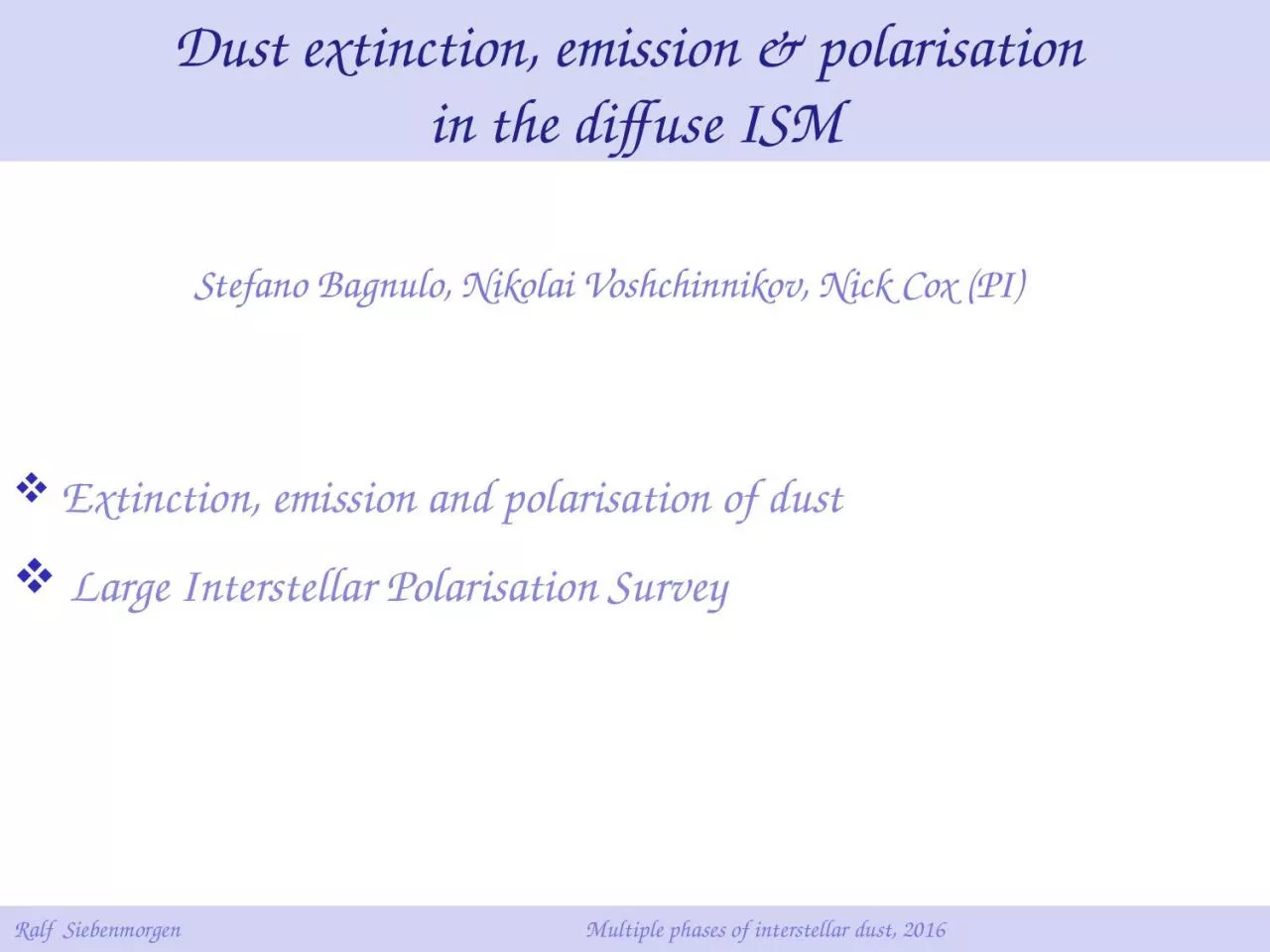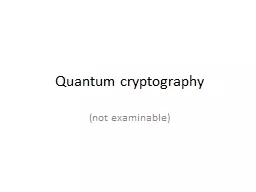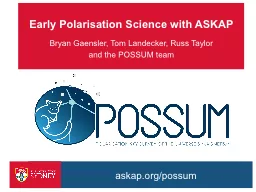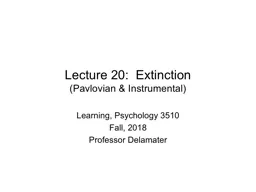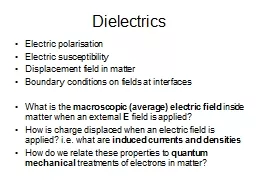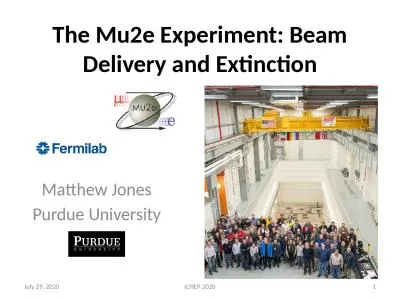PPT-Extinction, emission and polarisation of dust
Author : DoodleBug | Published Date : 2022-08-04
Large Interstellar Polarisation Survey Stefano Bagnulo Nikolai Voshchinnikov Nick Cox PI Dust extinction emission amp polarisation in the diffuse ISM Simultaneously
Presentation Embed Code
Download Presentation
Download Presentation The PPT/PDF document "Extinction, emission and polarisation of..." is the property of its rightful owner. Permission is granted to download and print the materials on this website for personal, non-commercial use only, and to display it on your personal computer provided you do not modify the materials and that you retain all copyright notices contained in the materials. By downloading content from our website, you accept the terms of this agreement.
Extinction, emission and polarisation of dust: Transcript
Download Rules Of Document
"Extinction, emission and polarisation of dust"The content belongs to its owner. You may download and print it for personal use, without modification, and keep all copyright notices. By downloading, you agree to these terms.
Related Documents

